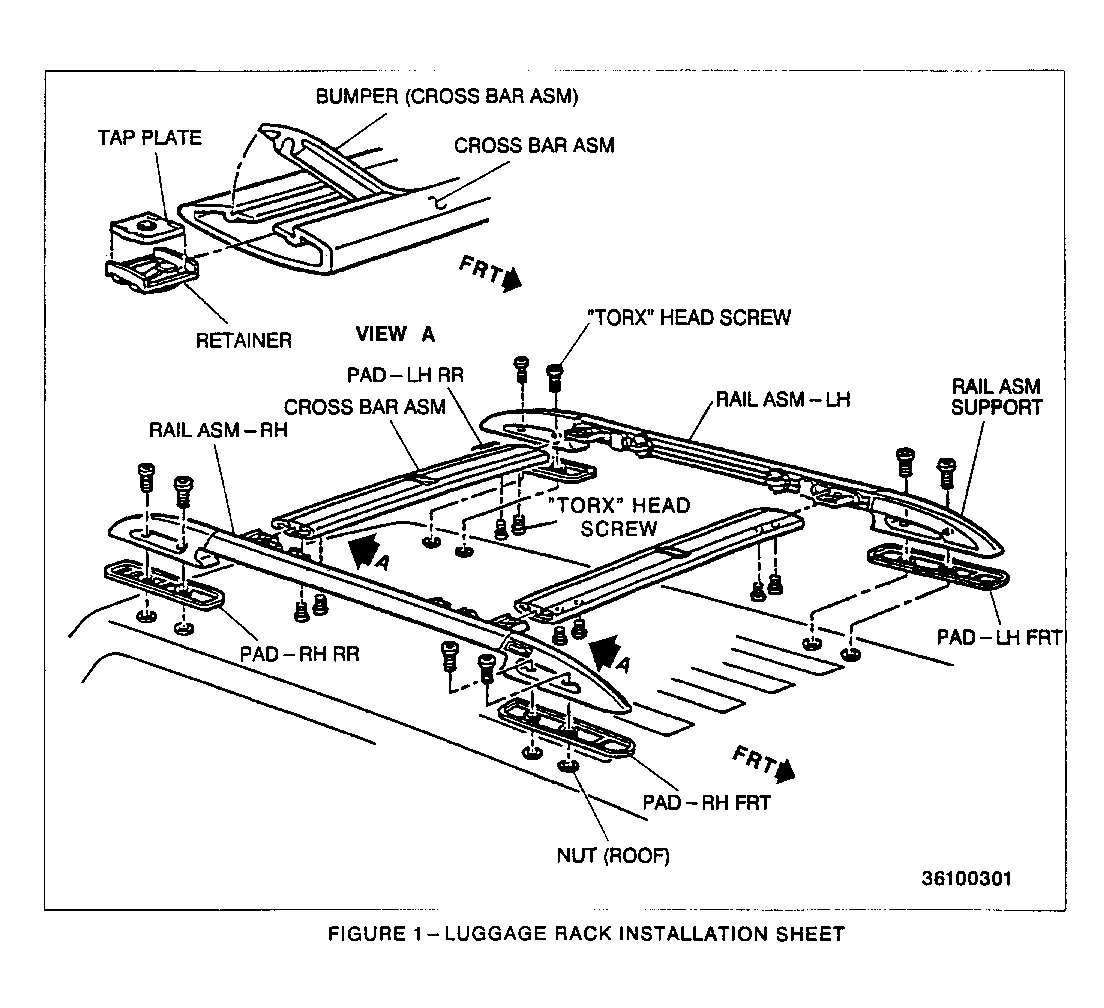ROOF LUGGAGE RACK INSTALLATION INSTRUCTIONS (INFORMATION)

SUBJECT: INFORMATIONAL - ROOF LUGGAGE RACK INSTALLATION INSTRUCTIONS
MODELS: 1993 S/T UTILITIES EQUIPPED WITH RPO V54
Roof luggage rack installation instructions have been modified to state ONLY HAND TOOLS SHOULD BE USED during installation. The use of power tools result in cross-threading of mounting fasteners and nicks and scratches of component parts. Only hand tools should be used to avoid loose and/or damaged racks.
NOTICE: Only hand tools should be used during luggage rack installation to avoid loose and/or damaged racks.
Film tape and "front" stickers should not be removed until after installation of the entire luggage rack assembly has been completed to avoid damaged or incorrectly installed luggage racks.
Refer to Figure 1:
1. Install one side of the rail assembly and rail supports. The four (4) mounting screws MUST BE HAND STARTED. Tighten finger tight.
Care should be taken to ensure screws are started straight to eliminate possibility of cross-threading.
2. Remove bumpers from cross rails to expose tap plates when attaching accessories. Insert two (2) tap plates and retainers (for accessory attachments) into each end of the cross bar prior to assembly to rail.
Reinstall the bumper by starting its installation by pushing the rearward edge in position first and follow with the front edge while working across the cross rail. Check to ensure the bumper edges are flush (flat) against the cross rail.
3. Install cross bar into mounted rail assembly. Using ONLY hand tools, install the fasteners and tighten to 2.2 to 3.4 N.m. (1.6 - 2.5 lbs. ft.).
4. Install the remaining rail assembly and rail supports. HAND START the four (4) mounting fasteners and tighten ALL eight rail support fasteners to 2.2 to 3.4 N.m. (1.6 -2.5 lbs. ft.). USE ONLY HAND TOOLS TO INSTALL FASTENERS.
5. Remove tape and "front" stickers from rails and cross bar assemblies.

General Motors bulletins are intended for use by professional technicians, not a "do-it-yourselfer". They are written to inform those technicians of conditions that may occur on some vehicles, or to provide information that could assist in the proper service of a vehicle. Properly trained technicians have the equipment, tools, safety instructions and know-how to do a job properly and safely. If a condition is described, do not assume that the bulletin applies to your vehicle, or that your vehicle will have that condition. See a General Motors dealer servicing your brand of General Motors vehicle for information on whether your vehicle may benefit from the information.
